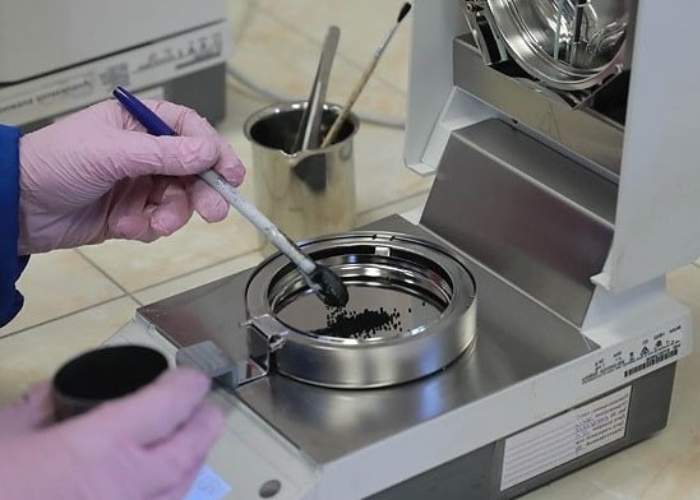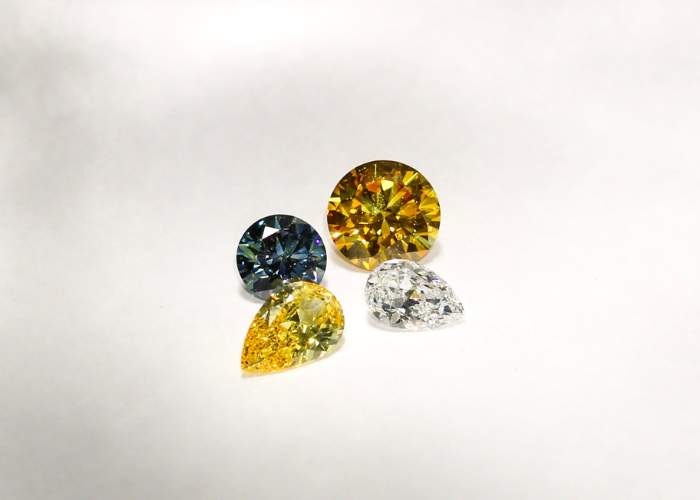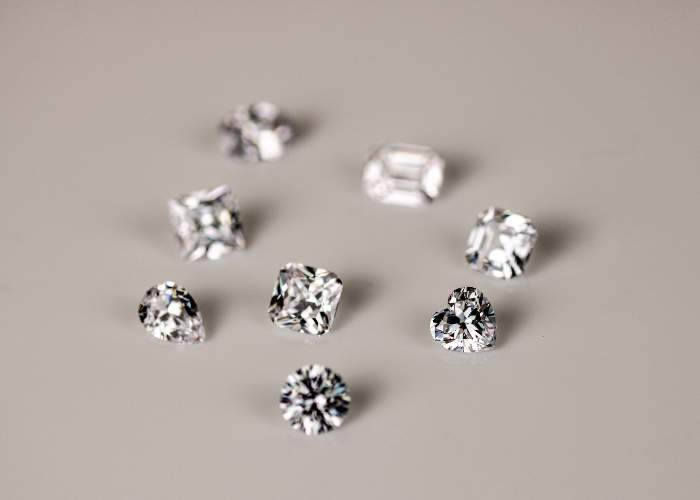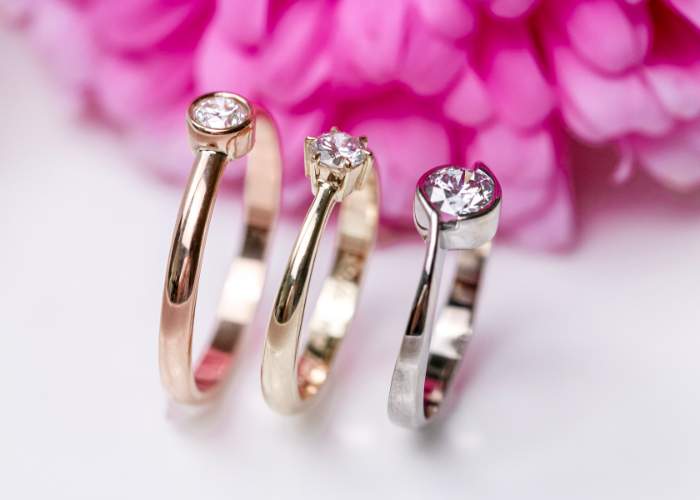When it comes to buying a diamond, one of the first decisions you have to make is choosing between a natural diamond and a lab-grown diamond. Both diamonds are beautiful; however, each offers their own unique qualities that may be more suitable for your individual needs or preferences. In this blog post, we will explore the different types of diamonds – including their attributes and characteristics – so that you can make an informed decision when selecting the best option for you. Whether you’re shopping for yourself or someone else, learning about these two options will make you confident in purchasing the ideal type of diamond.
How Are Diamonds Made?
A diamond’s journey starts billions of years ago with inorganic carbon placed under intense pressure and temperature. As time goes by, this carbon transforms into actual diamonds when the pressure reaches 725,000 pounds per square inch. The process consists of two stages: first, it experiences conditions like uniformity and crystallization over a prolonged period, and then, it is lifted towards the surface of the earth in ‘pipe-like formations’ or with hot, liquid magma flows. Diamonds obviously have much to thank mother nature for since their creation depends on all these elements combined with heat, time, and pressure, which ultimately ensure these gems’ distinctive beauty, strength, and toughness. Additionally, diamonds can be formed in a laboratory, where the same natural process is replicated.

Types of Diamonds
Diamonds may look all the same to the naked eye, but with the help of technology, diamonds can be divided into five distinct types – Type Ia, Type Ib, Type 1aB, Type IIa, and Type IIb. These differences arise from impurities present within the crystal lattice of carbon atoms at an atomic level. An infrared spectrometer is required to detect these impurities, taking information on the wavelength of light absorbed or emitted to identify each type of diamond. With this data in hand and a keen attention to detail, qualified gemologists can confidently determine what type of diamond you have!
Types of diamonds can also be separated in natural and lab grown diamonds
Natural Diamonds
Natural diamonds are some of the world’s most beautiful and sought-after gemstones. They form deep within Earth’s mantle under intense pressure, giving them extraordinary endurance and sparkle unmatched by any other gemstone. Natural diamonds have even been used to craft some of the most famous pieces of jewelry and icons throughout history, such as the Hope Diamond or during the Art Nouveau movement in Paris. Not only are they desirable and timeless, but the natural diamond formation is also a fascinating process that can take up to billions of years for certain types of diamonds to emerge from their creation within Earth’s depths. For these reasons, natural diamonds remain one of the most symbolic examples of beauty, luxury, and value. However, natural diamonds also tend to be more expensive than lab-grown diamonds, as the mining process is labor and resource intensive.
Diamond History:
The long and fascinating history of diamonds stretches back thousands of years. Some historians believe that India’s first known diamond mining was as early as the 4th century BC, though archaeological evidence suggests diamonds may have been found even earlier. By the 1200s, European monarchs had discovered their allure, and modern diamond cutting was established in Germany by 1913. Now a major luxury item, the romantic and financial significance of the diamond has made it one of life’s most coveted possessions. Diamond production comes from a process far more complex than most realize. These precious stones originate deep in Earth’s mantle and are brought to the surface by volcanoes or other tectonic forces and then mined in layers according to size and quality. Today, the industry is largely dominated by De Beers Group, which holds sources around the world before they are set into jewelry for display and admiration by all who can appreciate their natural beauty.
What is a blood diamond?
Blood Diamonds are a type of diamond mined in war zones and sold to finance an insurgency, invading army’s war efforts, or a warlord’s activity. The term originates from the civil war in Sierra Leone, where diamonds were used to fund rebel factions who committed serious human rights abuses against the people living in mining areas. In response to such practices, the Kimberley Process Certification Scheme was established by the United Nations General Assembly to regulate and limit the export of rough diamonds from conflict zones. To this day, many countries are still working diligently towards creating more guidelines for ethical diamond trade. As buyers of jewelry and gemstones, we all must do our part to ensure that none of these illegal gems make their way into the market. We should always take extra care to research and purchase diamonds from reputable sources that can guarantee their stones are conflict-free. By doing this, we can help protect human rights and ensure only safe diamonds make it into our jewelry boxes!
Lab-grown Diamonds:
On the other hand, lab-grown diamonds are created in a laboratory setting and can be made relatively quickly compared to their natural counterparts. The one type of lab-created diamond process begins with tiny particles of carbon and gases such as methane or hydrogen that are placed into an environment similar to the one found deep within Earth’s mantle and subjected to extreme pressure and temperatures. After several weeks or months, depending on the size of the diamond, these simulated conditions cause the carbon molecules to form into crystallized structures that resemble natural diamonds in every way but their price points. Lab-grown diamonds offer significant advantages over mined stones due to their affordability, sustainability, and ethical sourcing.
How Are They Made?
There are two main techniques to lab-grown a diamond: chemical vapor deposition (CVD) and high-pressure, high-temperature diamonds (HPHT) . In the CVD process, tiny particles of carbon (either graphite or diamond dust) and gases such as methane or hydrogen are placed into an environment similar to the one found deep within Earth’s mantle. The chamber is then subjected to extreme pressure and temperatures that cause the carbon molecules to form into crystallized structures resembling natural diamonds in every way but their price points. Using CVD, it is possible to create larger stones than would be able to be produced from mined sources. Lab-grown diamonds can also undergo additional treatments like cutting, polishing, and coloring.

Types of diamonds: HPHT Diamonds vs CVD diamonds?
High-pressure, high-temperature diamonds (HPHT) are grown in a lab by subjecting small pieces of diamond to extreme heat and pressure. This replicates the conditions found deep within Earth’s mantle, where natural diamonds form over millions of years. HPHT diamonds can be created in various shapes and sizes and usually have better clarity than other lab-grown stones.
Chemical vapor deposition (CVD) is a method that uses specialized machinery to deposit thin layers of carbon onto a substrate material to create a diamond-like structure. The process takes place inside an enclosed chamber at temperatures up to 1,400°C and pressures between 10-50 atmospheres. CVD produces colorless diamonds with excellent clarity and is ideal for creating larger, higher-quality stones. CVD diamonds are not affected by pressure and temperature changes like HPHT diamonds, making them more stable in the long run.
Overall, both HPHT and CVD diamonds offer advantages over their mined counterparts. They are affordable, sustainable, and ethically sourced and may be the perfect choice for those looking for a conflict-free diamond alternative. No matter what type of diamond you choose, it is important to do your research before making a purchase to ensure that you are getting a quality stone at a fair price. Being an informed consumer can help protect human rights and reduce the impact of unethical practices on our planet.

Memorial (Cremation) Diamonds
Memorial diamonds, also known as cremation diamonds or remembrance diamonds, are a type of lab-grown diamond created from the cremated ashes of a loved one. This process involves extracting carbon from the ashes and using it to create a unique diamond in any shape and size desired. Memorial diamonds are more affordable than mined stones, as they are lab grown diamonds, making them an accessible way for families to honor their lost loved ones with something beautiful and timeless. Memorial diamonds are meaningful keepsakes and lasting tributes that will help keep the memory of a loved one alive.
Memorial diamonds are also becoming popular as an alternative to traditional burial options, providing closure and peace of mind. Not only do they create a lasting memory for the family, but the person’s remains can be returned to nature in a meaningful way. A memorial diamond is an ideal choice for those who want to preserve the memory of a loved one in a timeless way.
Why choose cremation diamonds?
No matter the occasion, memorial diamonds are beautiful and meaningful pieces that can be treasured for years to come. They are easy to care for and require no special maintenance, making them perfect for busy lives or those with limited storage space. Whether used as an alternative to traditional burial or as a meaningful way to remember a loved one, memorial diamonds are sure to bring comfort and joy.
Many people choose to have the diamond made into a piece of jewelry, such as a necklace or ring, making it even more personal and special. Memorial diamonds can also be placed in decorative pendants or embedded in glass ornaments, allowing them to be displayed in any home.
By choosing memorial diamonds, you can honour someone special to you and keep their memory alive for many years to come. It is a thoughtful way to remember those who have passed and can be a great source of comfort during difficult times. So if you’re looking for an unconventional and unique way to cherish a loved one’s memory, consider memorial diamonds.

Benefits of Lab-Grown Diamonds Vs Natural Diamonds:
Lab-grown diamonds are more affordable and ethically sourced than mined diamonds, making them a great choice for those wanting to be socially conscious. Here are some of the key advantages of lab-grown diamonds over mined stones:
1.Lab grown diamonds cost 30-50% Less Than Natural Diamond:
When it comes to choosing diamonds, modern shoppers are increasingly turning towards lab-grown diamonds due to their many benefits. One such advantage is the significantly lower lab grown diamonds cost than natural diamonds. On average, lab grown diamonds cost between 30 to 50 percent less than mined stones of a similar size and quality. This price difference can equate to hundreds or even thousands of dollars saved when buying diamond engagement rings or other diamond jewellery. So, for those on a budget, lab-grown diamonds provide a great option with all the beauty and rarity of natural stones but at an accessible price point.
2. Environmentally Friendly:
Lab-grown diamonds are not only ethical but environmentally friendly as well. This is because they require no mining or destructive practices to create, eliminating any risk to the environment or human rights abuses that may occur with mined diamonds. The minimal environmental impact of lab-grown diamonds makes them a great choice for those who want to be conscientious about their jewelry purchases.
3. Great Customization Options:
Unlike mined stones, lab-created diamonds can be customized in almost limitless ways. From color and clarity to shapes and sizes – it’s possible to create an entirely unique stone. This allows customers to make their diamonds unique and perfect for whatever occasion they’re shopping for. Plus, due to the cost savings, customers can often afford a larger or higher quality diamond than they may have been able to if buying a mined stone.
4. Higher Quality:
Generally speaking, laboratory-grown diamonds are of higher quality than mined stones. This is because they are grown in a controlled environment where temperature, pressure, and other factors can be closely monitored to ensure the highest level of purity and perfection. Additionally, lab-created diamonds have fewer surface flaws or imperfections due to the more exacting growing process.
5. Easier Maintenance:
Overall, lab-created diamonds offer a great alternative to mined stones with all the same beauty and quality at an accessible price point. Whether you’re shopping for diamond jewelry or just looking to honor someone special, lab-grown diamonds provide a unique and meaningful way to do so without breaking the bank.

Conclusion -Types of diamonds
Though created in a laboratory, lab-grown diamonds are real and have the same physical and chemical properties as natural diamonds. When choosing between the two, consider your environmental impact, clarity concerns, and budget. Both options offer beautiful gems, ultimately up to the customer’s preference. Have you decided whether you would like a natural or lab-grown diamond? Let us know in the comments below!



